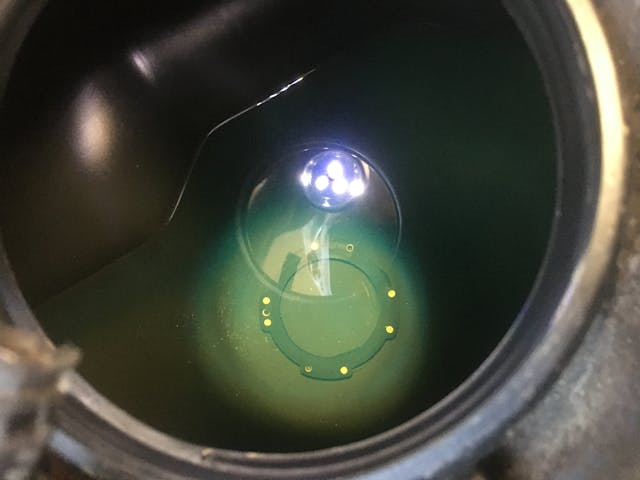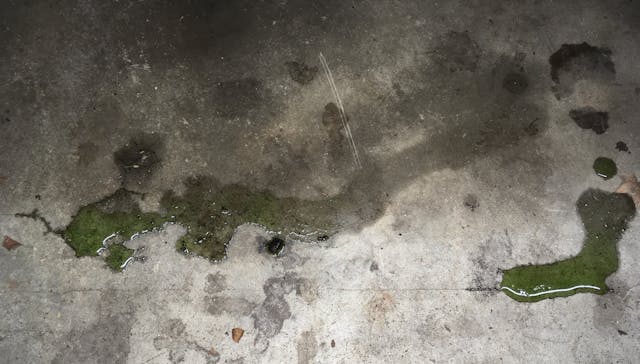Media | Articles
Salt and Snow Can Be Harmful to a Classic, but Your Garage Might Be, Too
Storing an old car during winter is a practice so common that we tend to overlook how damaging it can be. All manner of bad things can and do happen when you take a machine, like a classic car, that’s designed to move and park it. The danger is that three months sometimes turns into six, and trust me, a car’s condition never improves while sitting.
Really, the best situation is where the car is driven every few weeks when the roads are clear, as this keeps things exercised. If you must park your classic, don’t ignore it. Instead, consider the following before, during, and after hibernation.
Space: The tighter and drier, the better. A fabric shelter is better than nothing, but avoid leaving a car sitting over dirt or grass, as they’re sources of humidity that will accelerate rust.

Car Cover: Yes, even in the garage. It keeps particulate matter, the errant falling rake, and stray rodents off the paint. (FYI, HDC members get 10 percent off on California Car Covers.)
Marketplace
Buy and sell classics with confidence

Speaking of Rodents: They can ruin a car by chewing through fabric and wires, nesting under the hood, or leaving, ahem, presents all over your interior. I throw a Bounce dryer sheet on the floor, in the trunk, and under the hood. The theory is that the critters dislike strong smells. Some people use mothballs or peppermint oil. Anything is better than nothing.

Battery: If you have electricity, consider a trickle charger. But be safe about it: Tightly coiled extension cords, fraying wires, and the presence of combustible materials (everything from gasoline tanks to oily rags) can all increase the risk of fire. You might also consider taking the battery out and bringing it to where you can trickle-charge it safely. At minimum, disconnect the negative battery terminal. A healthy battery will probably fire the car right up when connected three months later. Longer than that, you’re pushing it.

Fuel: Ethanol attracts water, and when the fuel can no longer absorb it, the ethanol-water mixture sinks to the bottom. The corrosive mix can rust a metal tank. Ethanol-free gasoline is thus best for storage if you can avoid it, but in many areas, that’s becoming difficult. (Pure-gas.org lists stations that sell ethanol-free gas.) If all that’s available is E10 (10 percent ethanol), by all means fill the tank with it, as the less air there is above the fuel, the less opportunity there is for water absorption. There’s little harm in using short-term fuel stabilizers like Sta-Bil and Star Tron. If the car may sit for years, consider using Sunoco Optima race fuel (beware, it’s pricey).

Tires: Sitting eventually causes tires to flat-spot. I pump mine up to 40 psi prior to storage, but the best prevention is minimizing the time the car sits. If you can occasionally roll it a few feet, do so. There are various pads on the market (Tire Cradles, Flatstoppers) that certainly help. But if the tires are precious and you want to eliminate flat-spotting altogether, buy a set of junk wheels and tires for storage.

Beware the Winter Project: A big repair seems like an ideal use of the winter downtime—and a way to bond with your car even when it’s not moving. It’s a nice theory that, in my experience, has rarely panned out. My garage has heat and a dedicated “project” space, and I’ve done over-winter A/C retrofits and transmission swaps in it, but the heat in the garage is rarely living-room heat, and I can attest to the daily grind getting to be a bit much. Just remember that working on your classic is supposed to be enjoyable. Maybe say yes to stop-when-you-want tinkering, but leave the engine swap for spring.

In the Spring: Generally speaking, the longer the car has been in storage, the more careful you should be. At a minimum, check the fluid levels and look under the car for puddles. I’ll often pull the air cleaner housing off just to be certain that a mouse nest isn’t about to get sucked into the engine. Carbureted cars with mechanical fuel pumps typically need help starting. I’ve never seen the harm of a blast or two of starting fluid to get the car running and fuel drawn into the float bowls. My routine is to let the car idle for a minute, shut it off and check for leaks, inflate the tires to spec, then drive it around the block and check again for leaks.
***
This story first appeared in the January/February 2025 issue of Hagerty Drivers Club magazine. Join the club to receive our award-winning magazine and enjoy insider access to automotive events, discounts, roadside assistance, and more.
Rob’s latest book, The Best Of The Hack Mechanic™: 35 years of hacks, kluges, and assorted automotive mayhem, is available on Amazon here. His other seven books are available here on Amazon, or you can order personally inscribed copies from Rob’s website, www.robsiegel.com.











Your usually great article, but “Ethanol-free gasoline is thus best for storage if you can avoid it” could tidy up.
The cover photo shows the front driver fender of a ’64 Dodge Polara. A 50 year flashback….My dad bought a Polara in the ’70’s and it was complete except for that fork shaped front trim piece. We looked all over for one.
“Hey dad, I finally found one,…… just a bit (50 years) too late!!”
winter storage.Leave sunshades down- less space for mice to habitat. Steel wool in tailpipes(dont forget to remove) cardboard under car to catch fluids and to help identify